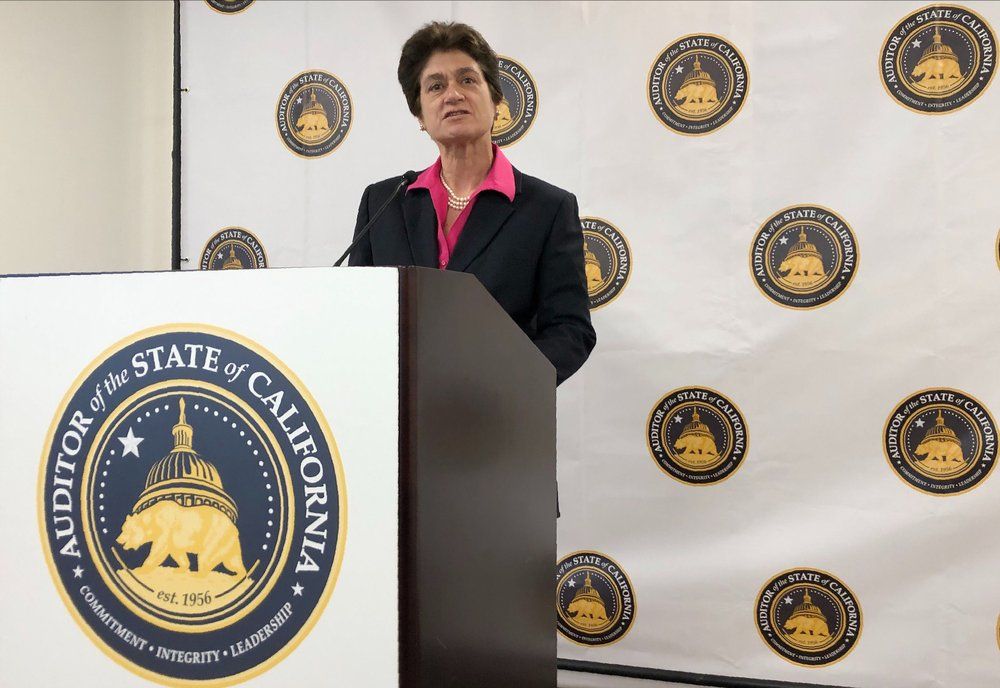Audit: Contact tracing in California failed to meet goals

SACRAMENTO, Calif. (AP) Despite promises from Gov. Gavin Newsom to build an “army” of contact tracers to contain the coronavirus pandemic, a new audit says California mustered less than half of the number promised.
But even if the staffing goals were met, it would not have been enough. The intended number of contact tracers was based on an assumption that California would average 5,000 new coronavirus infections a day. But the nation’s most populated state averaged 25,000 per day from late November to the end of December.
“The sheer number of cases has overwhelmed local health jurisdictions’ contact tracing efforts,” State Auditor Elaine Howle wrote in the report released Thursday.
Public health officials say one of the best ways to slow the spread of a dangerous disease is to contact infected people and retrace their steps. The goal is to identify others who have been exposed, contact them and ask them to quarantine before they can spread the virus to others.
Contact tracing was central to California’s strategy early in the pandemic. The Department of Public Health estimated the state needed 31,400 contact tracers. Newsom pledged to train 10,000 state workers and deploy them to help local public health departments meet that goal.
But by January, California had just 12,100 contact tracers, including 2,262 state workers.
That month, the state reported 834,000 COVID-19 infections. Local health officials tried to contact 85% of those people, but reached just 40%. Of those they did interview, officials identified others at risk of exposure in just 16% of total cases in January.
The audit comes after Howle warned last August that the state was at high risk of waste, fraud and abuse because it was getting so much federal coronavirus relief money. The designation authorized her to conduct a series of audits on how the state is spending federal money. Thursday’s audit focused on the $467 million that the California Department of Public Health received for testing and contact tracing.
Her report wasn’t all bad news for the Newsom administration. It praised state officials for far exceeding their goals for testing, which is crucial for understanding the progress of the pandemic. The state exceeded its testing goals by 1.5 million in November and 4.9 million in December.
Since August, labs have had an average reporting time of less than two days, which remained even when cases surged in December.
Contact tracing takes a deft touch, requiring people to cold call strangers and convince them to share personal information in the name of public health. San Francisco succeeded by training librarians for the job because they know how to deal with people and are good at using computers, said Dr. George Rutherford, an epidemiologist and contact tracing expert at the University of California, San Francisco.
In Sacramento, public health officials hired people from the communities they were trying to reach, hoping it would make those with the virus more comfortable. That worked well, but because most of those hired had no background in public health, it took a lot longer to train them than officials had expected.
In November, Sacramento County was averaging close to 1,000 infections per day and didn’t have enough people to make those calls. An overwhelmed system also delayed test results. Sometimes, the county would get results back more than 10 days after the test, which is longer than the period people are supposed to isolate, according to Dr. Olivia Kasirye, the county’s public health officer.
The focus has shifted from contact tracing to vaccinations in recent weeks as California’s supply of doses increases and officials make more people eligible. Newsom got his vaccine Thursday, the first day people over 50 were eligible statewide.
But now that cases are declining, public health officials say contact tracing is more important than ever because it’s easier to identify and isolate outbreaks and stop them from getting out of control.
Since state officials allowed school sports to resume this spring, Sacramento County’s tracing helped identify several small outbreaks with athletes and coaches, Kasirye said.
“I know that we are not talking a lot about (contact tracing), but we are still doing it,” she said. “We’re able to make contact with the coach, get everyone quarantined or evaluated or tested, whatever is needed, and that’s what has helped us to make sure that those outbreaks remain really small.”
While California’s contact tracing army never materialized, Rutherford said it was unrealistic to expect the state to train an entire workforce for the complex job in just a few months.
“I think it was a goal we need to have. It fell short ... but you also don’t know what the numbers would have been without it,” he said. “We may have had double the numbers without it.”
Howle, the auditor, said California should update its contact tracing plan to come up with a more accurate number of people needed to do the job.
She also said state officials have changed their strategy, acknowledging it’s not possible to reach everyone who has the virus during a peak surge. Instead, Howle said they are coming up with a plan that focuses on specific outbreaks and high-risk cases.
In a letter to Howle, California’s public health director, Dr. Tomás Aragón, said the state was working on a plan based on “current scientific knowledge” and what officials have learned from the first 10 months. The state will continue improving technology and collaborating with local health officials, he said.